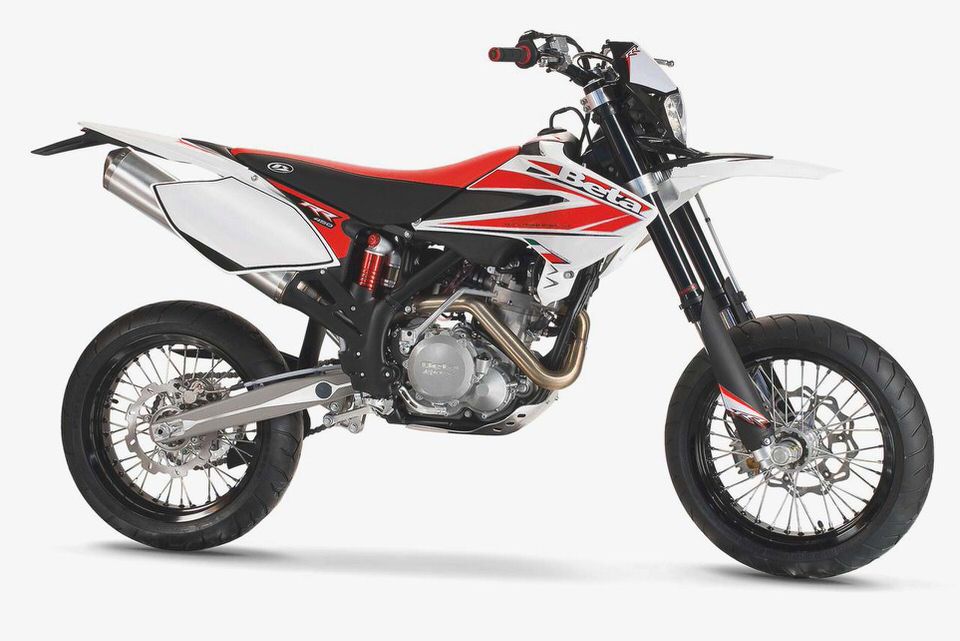
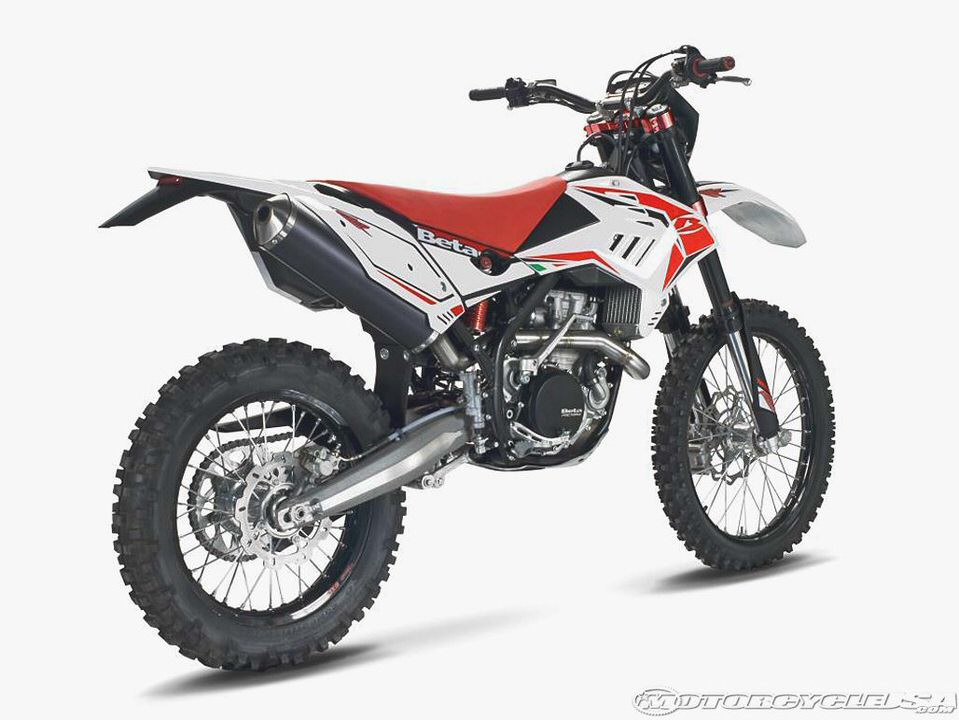
2012 Beta 450 RR Shootout
The Italians make a run for the top in the 2012 Beta 450 RR Shootout Video .
A four-valve Single rests at the Beta’s heart and draws its fuel from a 39mm Keihin carburetor. Although the Beta may not have had the most power in the test, it’s the only bike that can keep the KTM in sight on the dyno with a peak horsepower of 43.71 and 29.59 lb-ft of torque. Like the Austrian, the Beta utilizes a six-speed transmission and hydraulic clutch.
Both of these features were welcome during our desert testing. We spent the majority of time hauling across open terrain where the extra gearing pays dividends. However, with an extra cog in the gearbox, the Beta (and KTM) is able to shorten the internal ratios and make the 450 a stellar low-speed tool.
“Its linear power output and ability to tractor around at low speeds in a tall gear give the bike what it needs to suit my riding style,” says Frankie.
“Even though it’s carbureted, the Beta still has a snap off the bottom and plenty of mid-range,” adds Justin. “I think the 450 RR has the most character. It sounds great and doesn’t feel like you are riding a non-EFI bike.”
Where the KTM spools up quickly and requires an upshift, the Beta extends its top-end to a higher rev ceiling and the power builds more gradually along the way. This makes for a different riding experience within the transmission. Also, the Beta’s linkage suspension is less affected by rpm than the KTM’s PDS system.
“The Beta’s drivetrain system is phenomenal,” agrees Garcia. “The clutch on the 450 RR is butter-smooth and very easy to modulate with only one or two fingers. It also makes for very good feel and feedback to the rider. The transmission couldn’t have been better,” he continues. “The people over at Beta really put some effort into it.
I’m really fond on how much you can lug the bike at extremely low speeds – almost like a trials bike. This is a key feature in the single-track and rock-bed sections.”
The Beta is a great all-around enduro bike. We
were comfortable riding it in every condition.
Where the KTM shines on technical riding with solid traction, the Beta is willing to do work in nasty conditions with loose rocks or a layer of sand to contend with. This was a huge benefit in our desert test and a large part of the reason it outshines the Austrian in the handling department. All of us agree that the Sachs suspension is generally too soft for desert use. The Beta will bottom out and suffer the consequences on sharp, high-speed impacts.
But, it conducts itself better than the KTM and our riders were heard comparing it to a trials bike and a flat track bike so obviously it works in a wide variety of terrain.
“The bike has the most amazing front end feel I have ever experienced,” gushes Garcia about the new 48mm Sachs USD fork. “I am able to throw the bike into corners, standing up, in a two wheel slide and still steer the bike through the corner without ever coming close to falling.” But he concedes that, “Both front and rear could use some stiffer suspension. When hitting big potholes the Beta ran out of suspension due to bottoming out and then wanted to swap from side to side.
Front and rear suspension travel is 11.4 inches and the Beta makes good use of it. Aside from the spiky performance on sudden impacts, the TFX-technology fork and Sachs shock are more than capable. Our top speedster loved the Beta for several reasons.
At 6’4” he can appreciate the open rider layout more than anyone, but he is also pumped on the way it steers.
“This bike has the best feel for a taller rider who likes to stand up,” Martin claims. “It feels like the bars are far in front of the pegs and not hovering over the pegs like some of the other bikes. This bike is my favorite in technical trails because the front end is easy to turn. Plus the steering stops are so far back like the KTM, it is insane.”
All of our riders, even the pair of 5’8” testers, were very happy with the Beta’s layout. The Honda’s universal appeal is also great, but in a different way. The Beta gives its rider room to move around and find a comfortable riding position.
This allows us to overcome some of the suspension shortcomings.
Ergonomics are spread out, making plenty of room for our
tallest rider and encouraging riding on the pegs.
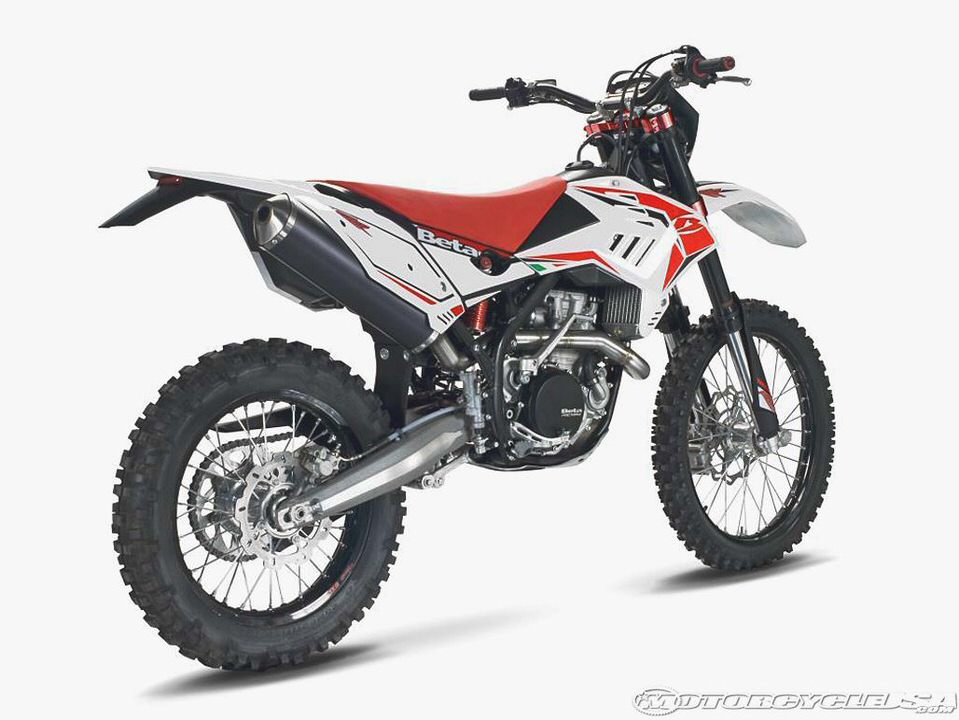

“The seat is great,” assures the long-legged Martin. “It has a good curve and nice soft seat. The only thing I have an issue with on the Beta’s ergonomics is when in a good rut your leg hits the cut-out for the radiator cap.”
The rest of our riders aren’t regularly getting the Beta laid over that far, so it’s not an issue. We did scrape the RR’s undercarriage several times due to its low 12.6-inch ground clearance. It’s a bummer considering the Beta’s prowess at slow-speed, technical riding, but with the best skid plate in the group, we’re less worried about it than some of the others.
However, it does play a factor when the trails get tight and the footpegs start to snag. It wasn’t much of an issue in this test, but we can see where this would be a problem in other riding areas.
The Italian also received good marks for its 260mm front brake and 240mm rear. They hydraulic units lack some of the outright stopping power of the KTM and perhaps the Yamaha, but feel and modulation is at a premium on the 450 RR.
“Where the KTM is sometimes called too harsh or overly aggressive with its massive brakes, the Beta has awesome binders as well which are easier for our picky riders to appreciate,” says the Arizona resident.
“The Beta and the KTM have (basically) the same brake package,” compares Garcia, “so my decision was based on which bike worked better. The Beta just seems to have a smoother feel when braking. The bike eases to a stop with the suspension compressing evenly and precisely.”
Beta gets some new styling cues for ’12 as well, including a new red color and redesigned headlight and front fender support. The color definitely strikes a chord with our testers as the Beta ranks first for appearance. The powder-coated chromoly chassis is a thing of beauty, and the billet hubs, triple clamps, anodized shock reservoir, wave rotors, frame guards, black fork tubes, wheels and accents make this a sinister yet sexy ride not to mention its aluminum work of art for a swingarm.
Beta clawed its way to the top of our shootout with the second-most category wins and strong rider impressions.
Beta squeaked out a victory in our 2012 shootout by virtue of good reviews from our riders. It performs excellently on the objective testing as well, scoring first or second in every category except price. However, the attention to detail, usable features, unmatched ergonomic comfort and well-rounded drivetrain gave it the edge this time around.
Beta might have a shorter tenure in the enduro class, but that has no impact on its ability to bring the goods to the table. With an ever-expanding dealer network and the personalized treatment you’ll find from a small business, owning a Beta shouldn’t be intimidating. The Italian holds strong with “old-school” technology and rocks the carburetor like nobody’s business.
This is a traditional enduro engine with smooth, usable power that propels the Beta to the front of the pack – at least for now.
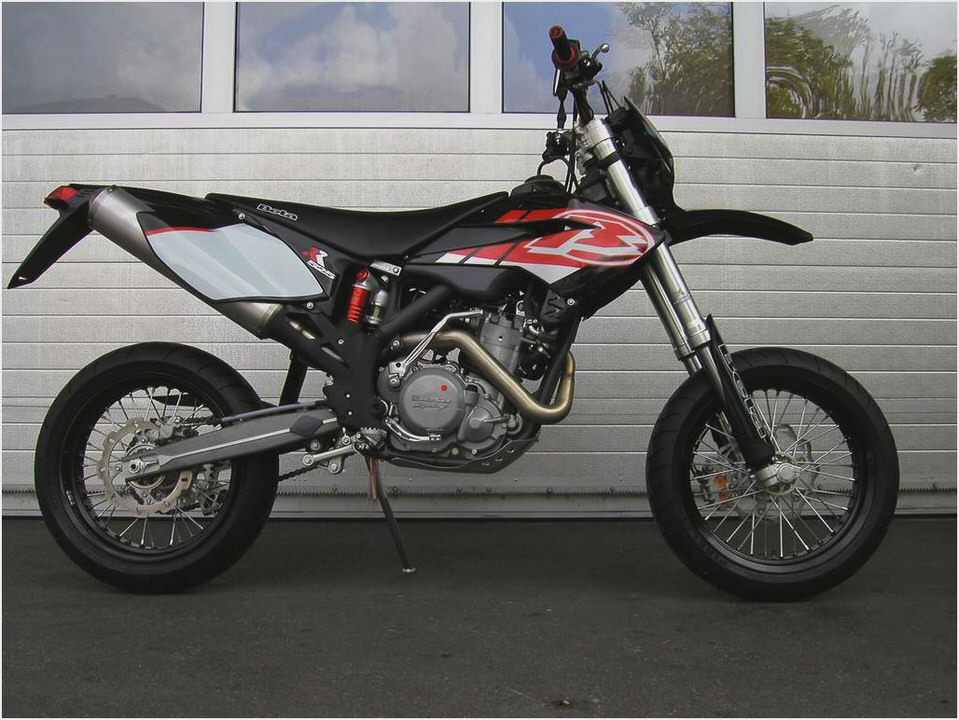
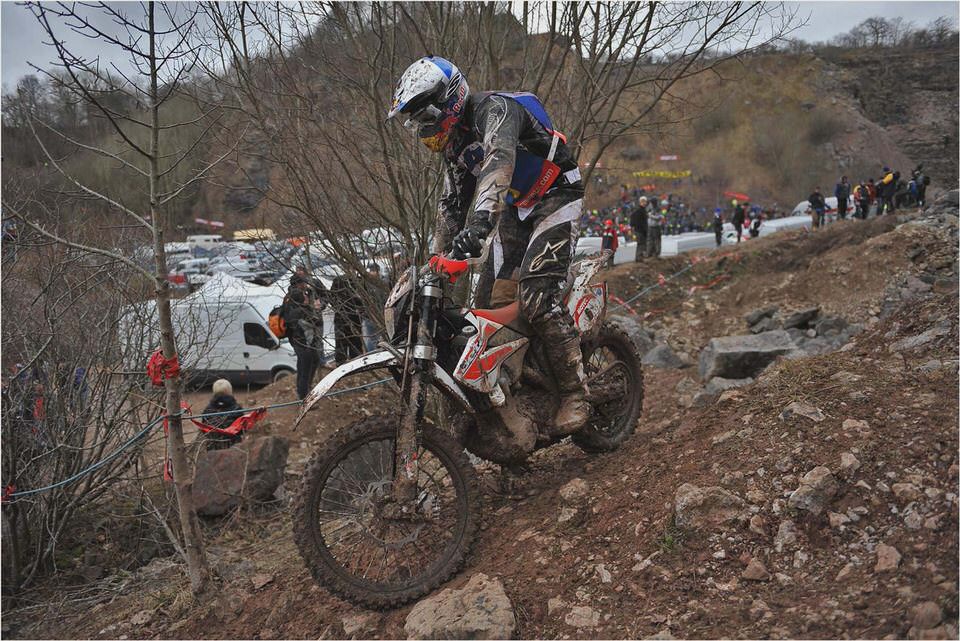
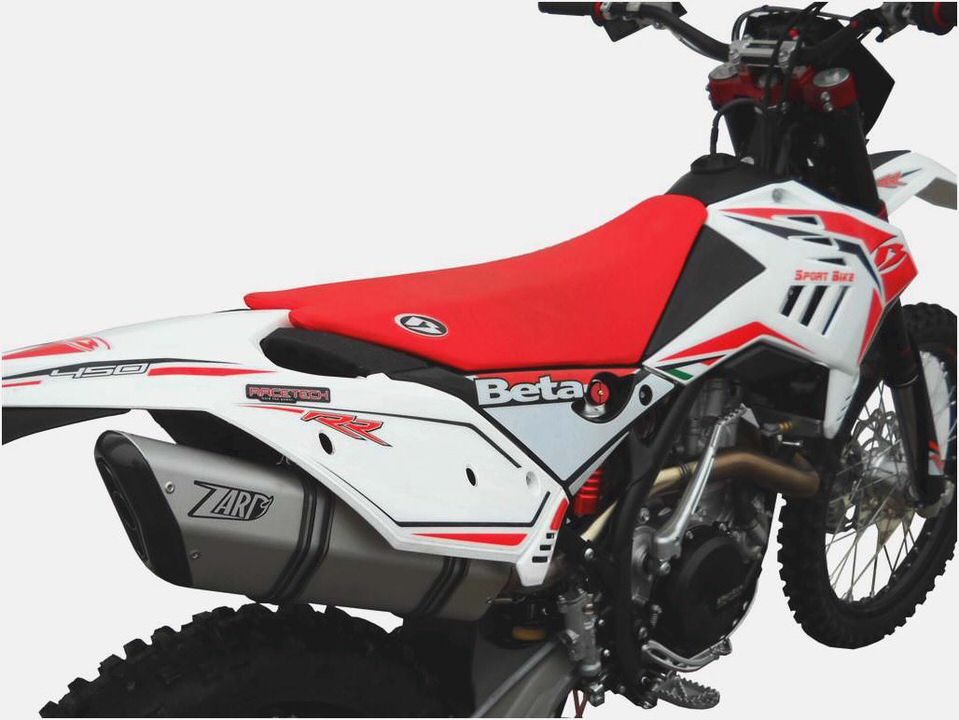

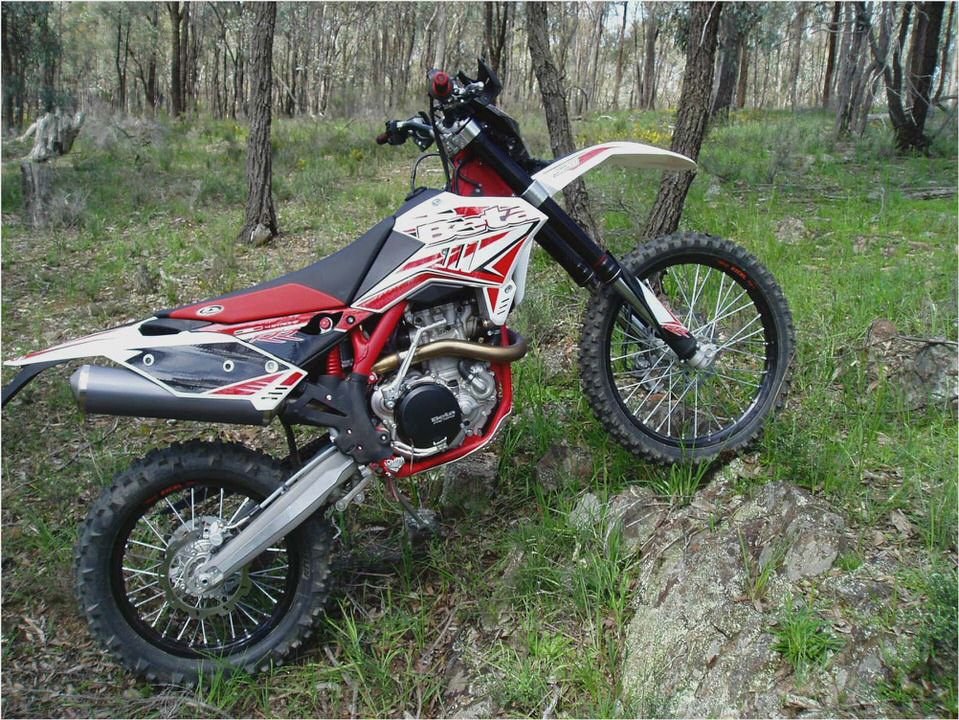
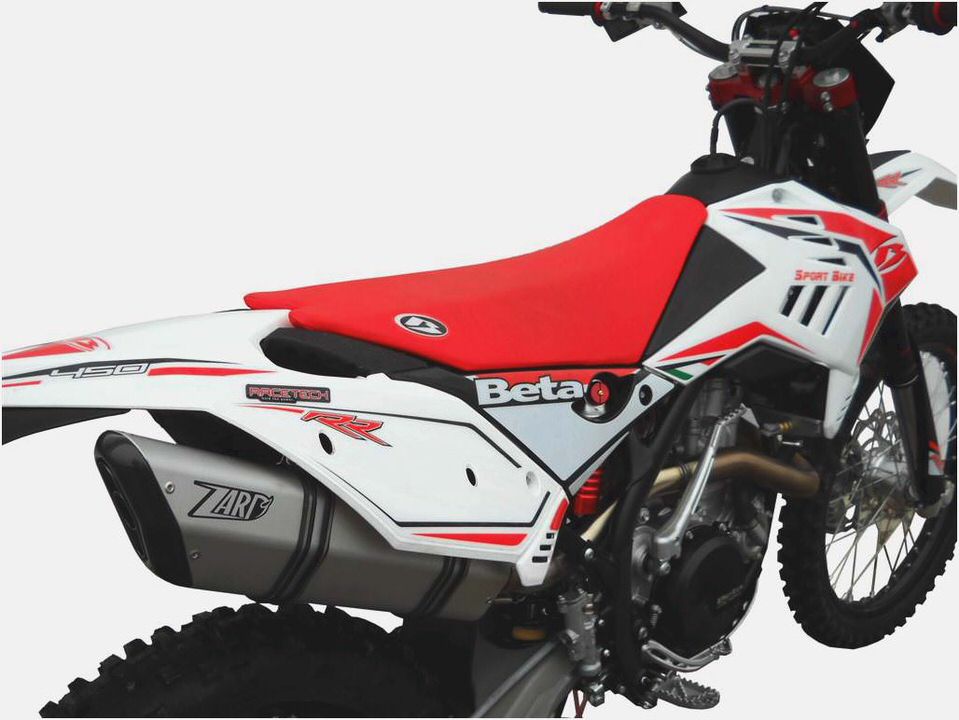

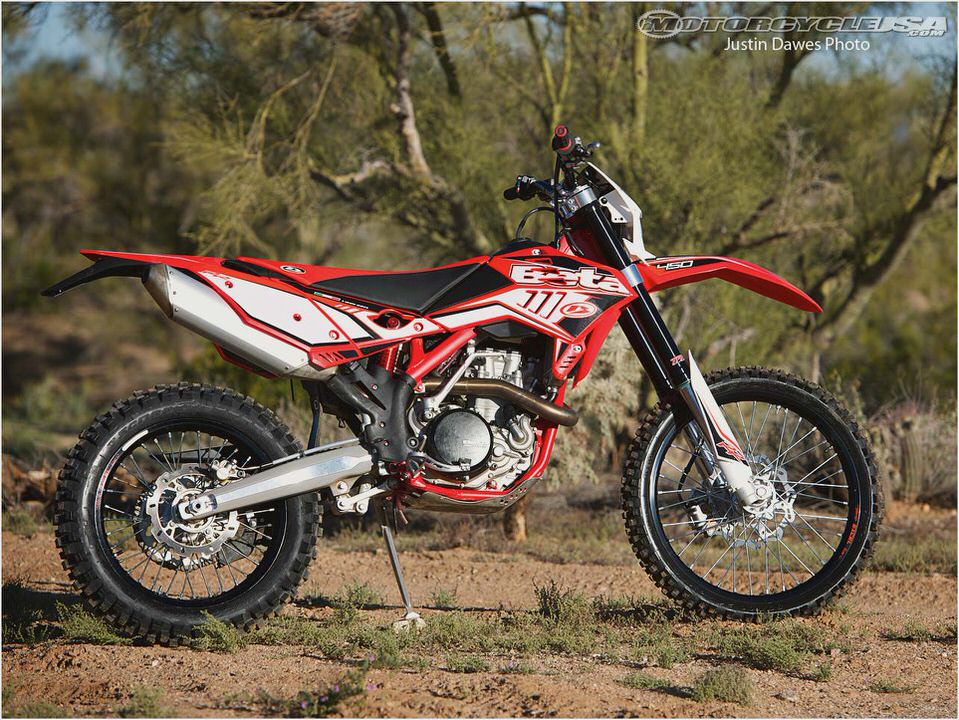
- BETA 300 RR 2014 ENDURO
- Beta Enduro, RR250, RR400, RR450, RR525, Beta400, Beta250, Beta450, Beta525…
- BETA RR 50 INSTRUCTION MANUAL Pdf Download.
- Blata Pocket Bikes
- Blata.ca + 1 905 369 0561
